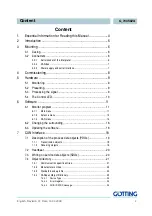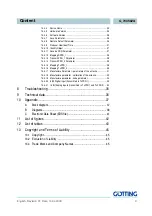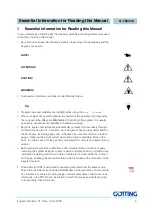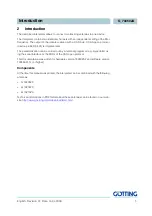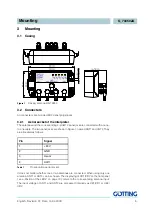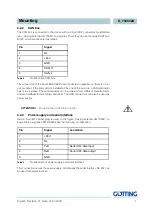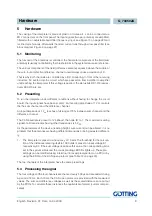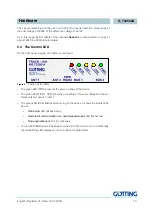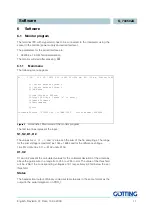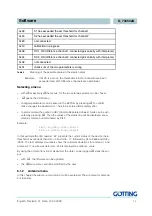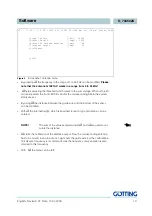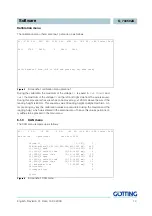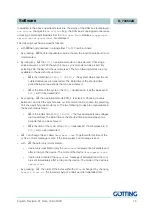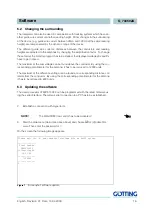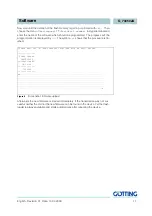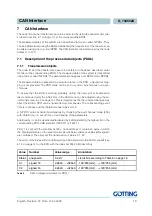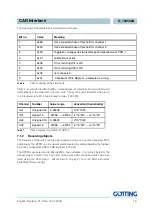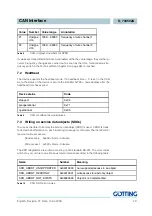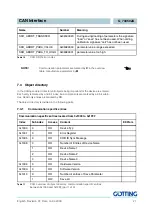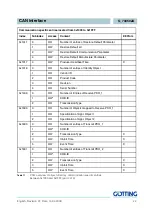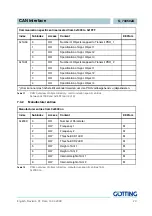
Hardware
English, Revision 01, Date: 14.04.2009
9
5
Hardware
The casing of the interpreter is made of plastic. All wires etc. can be connected via
M12 connecters on the front panel.The input signals (two per antenna) are amplified,
filtered with an adjustable band filter (frequency input, see Figure 10 on page 38) and
rectified synchronous. Afterwards the direct current runs through a low-pass filter (see
block diagram, Figure 9 on page 37)
5.1
Monitoring
The function of the antennas is controlled: the horizontal component of the field (sum
antenna) is usually controlled by the threshold bits in the system status as a reference.
The vertical component of the field (difference antenna) equals 0 above the middle of
the wire, but a defective difference channel would always cause a deviation of 0.
That is why both channels are controlled by a DC monitoring. In front of the receiving
inductors, 5V are fed into the circuit, which are passed on from amplifier to amplifier
until reaching the interpreter. If this voltage is applied, the status bits DC1-OK respec-
tively DC2-OK are set.
5.2
Presetting
To run the interpreter under different conditions without having to change the circuit
board, the input signals have been scaled: an incoming amplitude of 1 V
PP
controls
the the sum channel and the difference channel.
An input amplitude of 1 V
ss
reaches a full range of 75 % between sum channel and the
difference channel.
The CAN baudrate is preset to 125 kbaud, the node ID to 1. The maximal incoming
signal of all data streams having other frequencies is 5 V
PP
.
As the parameters of the device (reading height, wire current) can be altered, it is no
problem that the antennas are having different dimensions or being adjusted different-
ly.
1.
The interpreter is preset to a frequency of 10 kHz. The threshold for the calcula-
tion of the distances referring itself to 1000 units is preset on input voltage S1
respectively S2. If the sum voltage lies above this value, the corresponding bit is
set in the system status and the corresponding LED CDx lights up. These pre-
settings can be modified using a terminal (for example Hypertem on a PC) or by
using the SDOs of the CAN open protocol (see Table 12 on page 23).
The two channels of the interpreter have the same presettings.
5.3
Processing the signal
The four voltages of the four channels are checked every 500 µs and are added during
a period of 8 ms. Each 10 ms the CAN open protocol is provided with the measured
values. The sum and difference voltages as well as the scaled distances are put out
by the PDOs. To calculate those distances the quotients are formed (current compen-
sated) .


